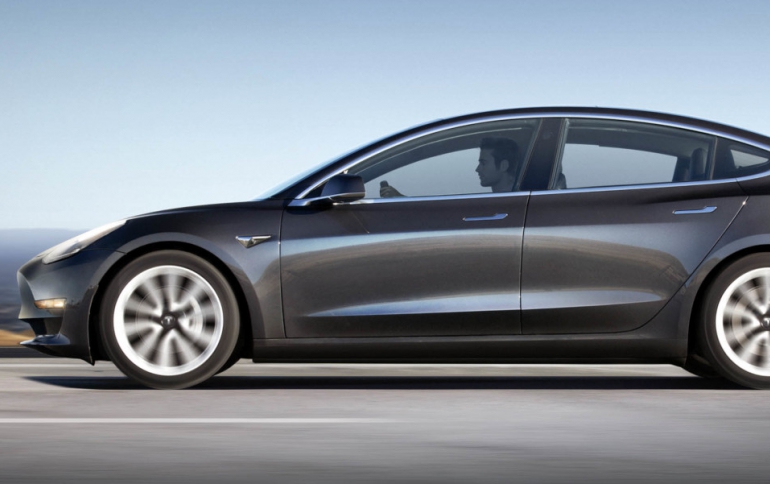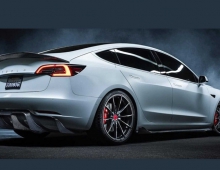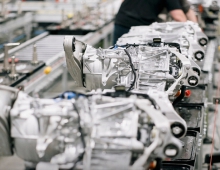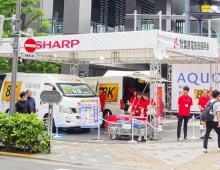
Tesla's Record Sales Fail To Deliver Profits
Tesla posted its best-ever deliveries of electric cars in the second quarter, but that wasn’t enough to pull the automaker back to profitability as it posted a worse-than-expected $389 million loss.
In the second quarter of 2019, Tesla said it achieved record deliveries of 95,356 vehicles and record production of 87,048 vehicles, surpassing the company's previous quarterly records of ~91,000 deliveries and ~86,600 units produced in Q4 of 2018. This represents rapid progress in managing global logistics and delivery operations at higher volumes. As a result of this growth and operational improvements, Tesla generated $614 million of free cash flow (operating cash flow less capex) in Q2. Combined with the company's public offering of equity and convertible bonds (net proceeds of $2.4 billion), Tesla ended the quarter with $5.0 billion of cash and cash equivalents, the highest level in Tesla’s history.
"This level of liquidity puts us in a comfortable position as we prepare to launch Model 3 production in China and Model Y production in the US. As a result of our strong deliveries and continued progress on cost efficiencies, our GAAP net loss declined significantly compared to Q1," Tesla said.
The second-quarter loss was $1.12 per share, excluding certain items, Tesla said. That was better than a $3.06 per share loss of a year ago. Revenue, aided by a surge in Model 3 deliveries, jumped to $6.34 billion in the quarter, up from $4 billion a year ago.
The company’s gross margin for its automotive business also shrank to 18.9% percent from 20.6% a year ago, as Tesla increasingly relies on higher volume from lower-priced Model 3 sales. CEO Musk reiterated a full-year goal of delivery goal of up to 400,000 electric cars to customers worldwide in 2019, but hedged on whether it will be profitable again in the third quarter.
“We are working to increase our deliveries sequentially and annually, with some expected fluctuations from seasonality. This is consistent with our previous guidance of 360,000 to 400,000 vehicle deliveries this year,” Musk and CFO Zachary Kirkhorn said. “We continue to aim for positive GAAP net income in Q3 and the following quarters, although continuous volume growth, capacity expansion and cash generation will remain the main focus.”
Since it listed on Nasdaq in June 2010, Tesla has never had a profitable year, and often eked out positive quarterly results aided by sales of emissions credits from its vehicles to other automakers, rather than on vehicle sales alone.
Tesla is preparing to begin building the Model Y, a small crossover derived from the Model 3, that will sell at a slightly higher price point. “Due to a significant overlap of components between Model 3 and Model Y, we are able to leverage existing manufacturing designs in the development of the Model Y production facilities,” Musk and Kirkhorn said.
Model S and Model X production continues to run on a single shift schedule, and Tesla said it produced over 14,500 vehicles in Q2. "Our deliveries increased sequentially to 17,722 as we continue to prioritize inventory reduction (working capital management). As a result, our total new car inventory levels have fallen to just 18 days of sales (including vehicles in transit, on ships and company owned vehicles), compared to the industry’s typical US inventory level of ~70 days of sales," Tesla said.
The company's capital expenditures totaled $250 million in second quarter, including for its Gigafactory in Shanghai, expansion of its charging and spending for the Model Y production line.
Tesla said Gigafactory Shanghai continues to take shape, and in Q2 the company started to move machinery into the facility for the first phase of production there. This will be a simplified, more cost-effective version of our Model 3 line with capacity of 150,000 units per year – the second generation of the Model 3 production process. Just like in the US, the Model 3 base price of RMB 328,000 is consistent with its gas-powered competitors, even before gas savings and incentives. Given Chinese customers bought well over a half million mid-sized premium sedans last year, this market poses a strong long-term opportunity for Tesla. "We are looking forward to starting production in China by the end of this year. Depending on the timing of the Gigafactory Shanghai ramp, we continue to target production of over 500,000 vehicles globally in the 12-month period ending June 30, 2020," Tesla said.
Tesla says it remains on track to launch local production of the Model 3 in China by the end of the year and Model Y in Fremont by fall of 2020. The company is also accelerating its European Gigafactory efforts and is hoping to finalize a location choice in the coming quarters.
In a surprise announcement, Elon Musk said in a results call that Tesla cofounder JB Straubel, the company's long-time tech chief who was instrumental in designing its original battery pack and motor, is stepping down as CTO and will transition to a senior advisor role. He'll be replaced by Drew Baglino, the company's vice president of technology.
The company’s closely watched gross margin for its automotive business also shrank to 18.9% percent from 20.6% a year ago, as Tesla increasingly relies on higher volume from lower-priced Model 3 sales. CEO Musk reiterated a full-year goal of delivery goal of up to 400,000 electric cars to customers worldwide in 2019, but hedged on whether it will be profitable again in the third quarter.
“We are working to increase our deliveries sequentially and annually, with some expected fluctuations from seasonality. This is consistent with our previous guidance of 360,000 to 400,000 vehicle deliveries this year,” Musk and CFO Zachary Kirkhorn said in a result letter. “We continue to aim for positive GAAP net income in Q3 and the following quarters, although continuous volume growth, capacity expansion and cash generation will remain the main focus.”
In its ninth year as a public company Tesla remains unusually volatile from one quarter to the next, swinging into the black in the second half of 2018 before generating new losses this year. Since it listed on Nasdaq in June 2010, the company has never had a profitable year, and often eked out positive quarterly results aided by sales of emissions credits from its vehicles to other automakers, rather than on vehicle sales alone.
Tesla's stock fell to $239, down about $26 from its $264.88 price at the close on Wednesday. Forbes estimates that the drop likely wiped out $800 million of billionaire Musk’s wealth, reducing his net worth to $20.1 billion after results posted from $20.9 billion earlier in the day.
The company's net loss was $389 million, or half the $742.7 million it lost a year ago. For the first half, the net loss was $1.06 billion. The margin reduction and volatile pricing for Tesla vehicles in the quarter raise concerns for analysts about whether demand for the company's products is plateauing for now.
"Tesla may have a reputation as an innovator but to boost sales they stole a page from the traditional automaker playbook by lowering prices and making buying easier with a leasing program,” said Jessica Caldwell, Executive Director of Insights for Edmunds.
“Model S and Model X are getting stale and Tesla needs to do something to keep shoppers interested in these higher profit vehicles," she said. "And questions remain about the cash flow and profitability impact of the Model 3 leasing program. Given that Tesla hit its stride in the back half of last year, it’s essential that the company finds some way to keep this sales momentum going if it wants to prove to investors it’s on the right track.”
Preparations are underway to begin building the Model Y, a small crossover derived from the Model 3, that will sell at a slightly higher price point. “Due to a significant overlap of components between Model 3 and Model Y, we are able to leverage existing manufacturing designs in the development of the Model Y production facilities,” Musk and Kirkhorn said.
Customer deposits declined to $631 million in the quarter, the company said. Tesla's capital expenditures totaled $250 million in second quarter, including for its Gigafactory in Shanghai, expansion of its charging and spending for the Model Y production line.
Tesla said earlier this month it delivered 95,200 electric vehicles to customers during the period that ended June 30, including 72,531 units of its lower-priced Model 3 sedan. Production of Model 3s, S sedans and X crossovers during the quarter totaled 87,048, surpassing the previous quarterly high set in the final months of 2018.





















